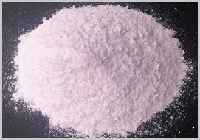中国耐火材料(轻烧镁球、轻烧镁粉)行业的昨天、今天和明天 Yesterday, today and tomorrow in Chinas refractory (light-burned magnesium balls, light-burned magnesium powder) industry
发布日期:2015-08-28 00:00 来源:http://www.ykbhlm.com 点击:
http://www.ykbhlm.com 我国是世界最大的耐火材料(轻烧镁球,轻烧镁粉,苦土粉等)生产、消费和出口国。我国耐火材料工业支撑了钢铁及其他高温工业的快速发展。但近年,受市场需求萎缩、成本大幅上升等因素影响,耐火材料企业效益下滑,前景不容乐观。记者对徐殿利副会长进行了专访,以期让读者更全面地了解我国耐火材料行业。
记者:耐火材料产业在钢铁、有色、水泥、玻璃(862,-5.00,-0.58%)等高温工业的发展中起着不可替代的重要作用,我国耐火材料行业经历了怎样的发展历程?
徐殿利:耐火材料(轻烧镁球,轻烧镁粉,苦土粉等)主要应用于钢铁、水泥、陶瓷、玻璃、有色金属冶炼、电力等多个领域,其中钢铁行业是耐火材料最大用户,其消耗量占耐火材料消耗总量的60%-65%。
改革开放以来,我国耐火材料行业经历了以下三个发展阶段。第一个阶段是20世纪90年代,改革开放初期,由于耐火材料投资小,技术含量相对较低,一批民营耐火材料厂大量兴建。那时是国有企业和民营企业间的竞争。第二个阶段是2000年以后,由于下游行业快速发展,带动耐火材料需求量急速扩大,推动了以民营企业为主导的耐火材料工业快速发展。这一阶段是传统民营企业与新生代民营企业间的竞争。近年来,随着下游行业企业规范采购秩序,耐火材料市场向优势企业转移,目前是大型耐材企业之间的博弈。
目前,民营企业在耐火材料行业中占绝对主导地位,国有企业耐火材料产量占总产量的比例不足5%。
记者:我国耐火材料工业在国际耐材市场的地位如何?
徐殿利:我国耐火材料产量占世界总产量的65%左右。实际上,国内耐火材料需求量大约也占世界总需求量的60%以上。每年耐材进口量占国内需求量的比例不到0.5%,出口量占总产量的比例不足10%,但近十年来我国一直是全球最大的耐火材料出口国。
国产耐火材料,不管是数量、质量还是品种都可以满足我国高温行业生产运行和技术发展对耐火材料的需求。
记者:2014年我国耐火材料行业整体运行情况如何?
徐殿利:2014年,受国内钢铁等下游产业低迷状态影响,特别是基建用耐火材料需求量下降的影响,我国耐火材料产量为2797.15万吨,同比降低4.48%。
2014年我国耐火原材料出口贸易额又一次突破30亿美元,达33.30亿美元。其中耐火制品出口量186.23万吨,同比增长5.27%;出口贸易额15.34亿美元,同比增长9.73%,综合平均价格同比增长4.24%。2014年,我国耐火制品进口量2.51万吨,同比下降26.45%。
记者:我国耐火材料行业目前存在的主要问题是什么?
徐殿利:第一是产能严重过剩导致市场供大于求和无序竞争的问题,使一些耐材企业生产经营困难,举步维艰。据相关地方协会调研显示,2014年三季度,部分耐材主产区近60%的中小耐材企业处于停产、半停产状态。
第二是应收货款高,企业资金压力进一步加大。对58家耐材重点企业经营状况调研发现,2014年末重点企业应收货款总额128.56亿元,同比增加9.37亿元,增长7.86%。
第三,虽然我国耐火矿产资源比较丰富,但滥采滥挖、破坏和浪费现象严重,资源保护迫在眉睫。
此外,新环保法的实施和《耐火材料行业规范条件》出台后,门槛高了,管理更规范了,耐材企业生存和发展的压力也更大了。
记者:耐火材料企业联合重组的进程如何?
徐殿利:耐火材料行业联合重组力度较大,尤其是几家上市的耐火材料公司,他们在企业联合重组方面进展很快,不少企业通过联合重组快速扩大了生产规模,已经形成几个具有较强竞争力的大型耐火材料企业。2010年前,销售收入超过十亿元的耐火材料企业只有1-2家,现在达到十多家。
记者:我国耐火材料行业未来将呈现怎样的发展趋势?
徐殿利:主要下游行业受产能过剩影响,市场供需矛盾突出,低价格、低效益的局面短期内难以改变,且其产品的市场需求都已进入峰值弧顶区。
随着耐火材料技术进步,性能提高,单位产品耐火材料消耗将逐步降低。耐材协会调研结果表明,我国钢铁行业整体承包采购方式下的吨钢耐火材料消耗已下降到15千克,但我国吨钢耐火材料消耗与国际先进水平还有很大的差距。
因此,在国内下游行业产能过剩、技术进步使单位耐火材料消耗降低等多重作用下,国内耐火材料需求将呈现总体趋降的波动运行走势。
在这个大前提下,我国耐火材料行业首先要实现转型升级,产业结构调整,扩大联合重组成果,提高产业集中度,适应新常态。其次要注重科技创新,在产学研用、自主创新上下功夫,提高全行业竞争力。最后要在新环保法和《耐火材料行业规范条件》的管理下,注重节能环保,打造综合绿色耐材。
http://www.ykbhlm.com China is the world's largest producer, consumer and exporter of refractory materials (light burned magnesium balls, light burned magnesium powder, bitter clay powder, etc.). China's refractory industry supports the rapid development of steel and other high-temperature industries. However, in recent years, due to factors such as shrinking market demand and sharply rising costs, the efficiency of refractories companies has declined, and the outlook is not optimistic. The reporter conducted an exclusive interview with Vice President Xu Dianli, with a view to let readers understand China's refractory industry more comprehensively.
Reporter: The refractory industry has played an irreplaceable role in the development of high-temperature industries such as steel, nonferrous metals, cement, and glass (862, -5.00, -0.58%). What kind of development history has China's refractory industry experienced?
Xu Dianli: Refractory materials (lightly burned magnesium balls, lightly burned magnesium powder, bitter clay powder, etc.) are mainly used in steel, cement, ceramics, glass, non-ferrous metal smelting, power and other fields. Its consumption accounts for 60% -65% of the total consumption of refractory materials.
Since the reform and opening up, China's refractory industry has experienced the following three development stages. The first stage was in the 1990s. At the beginning of the reform and opening up, due to the small investment in refractories and the relatively low technical content, a large number of private refractory plants were built. It was a competition between state-owned and private enterprises. The second stage is after 2000. Due to the rapid development of downstream industries, the demand for refractory materials has expanded rapidly, which has promoted the rapid development of refractory industries led by private enterprises. This stage is the competition between traditional private enterprises and new generation private enterprises. In recent years, as the downstream industry enterprises regulate the procurement order, the refractory market has shifted to advantageous enterprises, and it is currently a game among large refractory enterprises.
At present, private enterprises occupy an absolute dominant position in the refractory industry, and state-owned enterprises' refractory output accounts for less than 5% of the total output.
Reporter: What is the status of China's refractory industry in the international refractory market?
殿 Xu Dianli: China's refractory output accounts for about 65% of the world's total output. In fact, the domestic demand for refractory materials also accounts for more than 60% of the total world demand. Each year, the proportion of refractory imports accounts for less than 0.5% of domestic demand, and the proportion of exports accounts for less than 10% of total output, but China has been the world's largest exporter of refractories for the past decade.
Domestic refractory materials, whether in quantity, quality, or variety, can meet the demand for refractory materials in China's high-temperature industry during production operations and technological development.
Reporter: How about the overall operation of China's refractory industry in 2014?
殿 Xu Dianli: In 2014, due to the downturn in domestic downstream industries such as iron and steel, especially the decline in the demand for infrastructure refractories, China's refractory output was 27.971 million tons, a year-on-year decrease of 4.48%.
In 2014, China's export trade of refractory raw materials exceeded US $ 3 billion again, reaching US $ 3.333 billion. Among them, the export volume of refractory products was 1,862,300 tons, a year-on-year increase of 5.27%; the export trade value was 1,534 million US dollars, a year-on-year increase of 9.73%, and the comprehensive average price increased by 4.24% year-on-year. In 2014, China's imports of refractory products were 25,100 tons, a year-on-year decrease of 26.45%.
Reporter: What are the main problems in China's refractory industry?
殿 Xu Dianli: The first is the problem of severe overcapacity that leads to oversupply of the market and disorderly competition, making some refractory companies difficult to produce and operate. According to surveys by relevant local associations, in the third quarter of 2014, nearly 60% of small and medium-sized refractory companies in some main refractory production areas were in a state of suspension or semi-stoppage.
Second is the high receivables, and the pressure on corporate funds has increased. A survey of the operating conditions of 58 key refractory enterprises found that at the end of 2014, the total receivables of key enterprises was 12.856 billion yuan, an increase of 937 million yuan and 7.86% year-on-year.
Third, although China's refractory mineral resources are relatively abundant, excessive mining, destruction and waste are serious, and resource protection is imminent.
In addition, after the implementation of the new environmental protection law and the "Regulations for the Refractories Industry", the threshold is higher, the management is more standardized, and the pressure for the survival and development of refractories companies is also greater.
Reporter: What is the process of joint reorganization of refractory enterprises?
Xu Dianli: The refractory industry has undergone joint reorganization efforts, especially several listed refractories companies. They have made rapid progress in joint corporate reorganization. Many companies have rapidly expanded their production scale through joint reorganization. Competitive large refractories company. Before 2010, there were only 1-2 refractory companies with sales revenues exceeding one billion yuan, and now they have reached more than ten.
Reporter: What kind of development trend will China's refractory industry show in the future?
殿 Xu Dianli: The main downstream industries are affected by overcapacity, the market supply and demand contradictions are prominent, the situation of low prices and low benefits is difficult to change in the short term, and the market demand for its products has entered the peak arc area.
With the advancement of refractory technology and performance, the consumption of refractories per unit product will gradually decrease. According to the investigation results of the Refractories Association, the consumption per ton of steel refractory under the overall contract procurement method of China's steel industry has dropped to 15 kg, but there is still a large gap between the consumption of per ton steel refractory and the international advanced level.
Therefore, under the multiple effects of overcapacity in the downstream industries in the domestic industry and the reduction in unit refractory consumption due to technological progress, the domestic demand for refractory materials will show a downward trend in general fluctuations.
Under this premise, China's refractory industry must first realize transformation and upgrading, adjust industrial structure, expand the results of joint reorganization, increase industrial concentration, and adapt to the new normal. Secondly, we must pay attention to scientific and technological innovation, work hard in industry-university-research, independent innovation, and improve the competitiveness of the entire industry. Finally, under the management of the new environmental protection law and "Specification Conditions for the Refractory Industry", attention must be paid to energy conservation and environmental protection to create a comprehensive green refractory.
相关标签:轻烧镁粉
下一篇:山东耐火材料(轻烧镁球、轻烧镁粉)多家企业因废弃超标被开罚单 Shandong refractories (lightly burned magnesium balls, lightly burned magnesium powder) many companies have been fined for discarding excessive standards
相关产品:
相关新闻:
- 轻烧镁粉的简述 Brief Description of Light Burnt Magnesium Powder
- 波海为您讲解轻烧镁粉的储藏方式 Bohai explains how to store lightly burned magnesium powder
- 耐火材料典型产品轻烧镁粉 Light refractory magnesium powder
- 污水处理用轻烧镁粉 Light burned magnesium powder for sewage treatment
- 轻烧镁粉简述 Brief Introduction of Light Burned Magnesium Powder
- 轻烧镁粉是一种重要的耐火材料 Light burned magnesium powder is an important refractory material
- 新型建材原材料——轻烧镁粉产品 New building materials raw materials-light burned magnesium powder products
- 轻烧镁粉是什么? What is Light Burnt Magnesium Powder?
- 营口波海菱镁材料有限公司所生产的轻烧镁粉 Light burned magnesium powder produced by Yingkou Bohai Ling Magnesium Material Co., Ltd.
- 关于防火板用轻烧镁粉的含量注意事项! Notes on the content of light-burned magnesium powder for fire board!





 淘宝旺旺
淘宝旺旺


